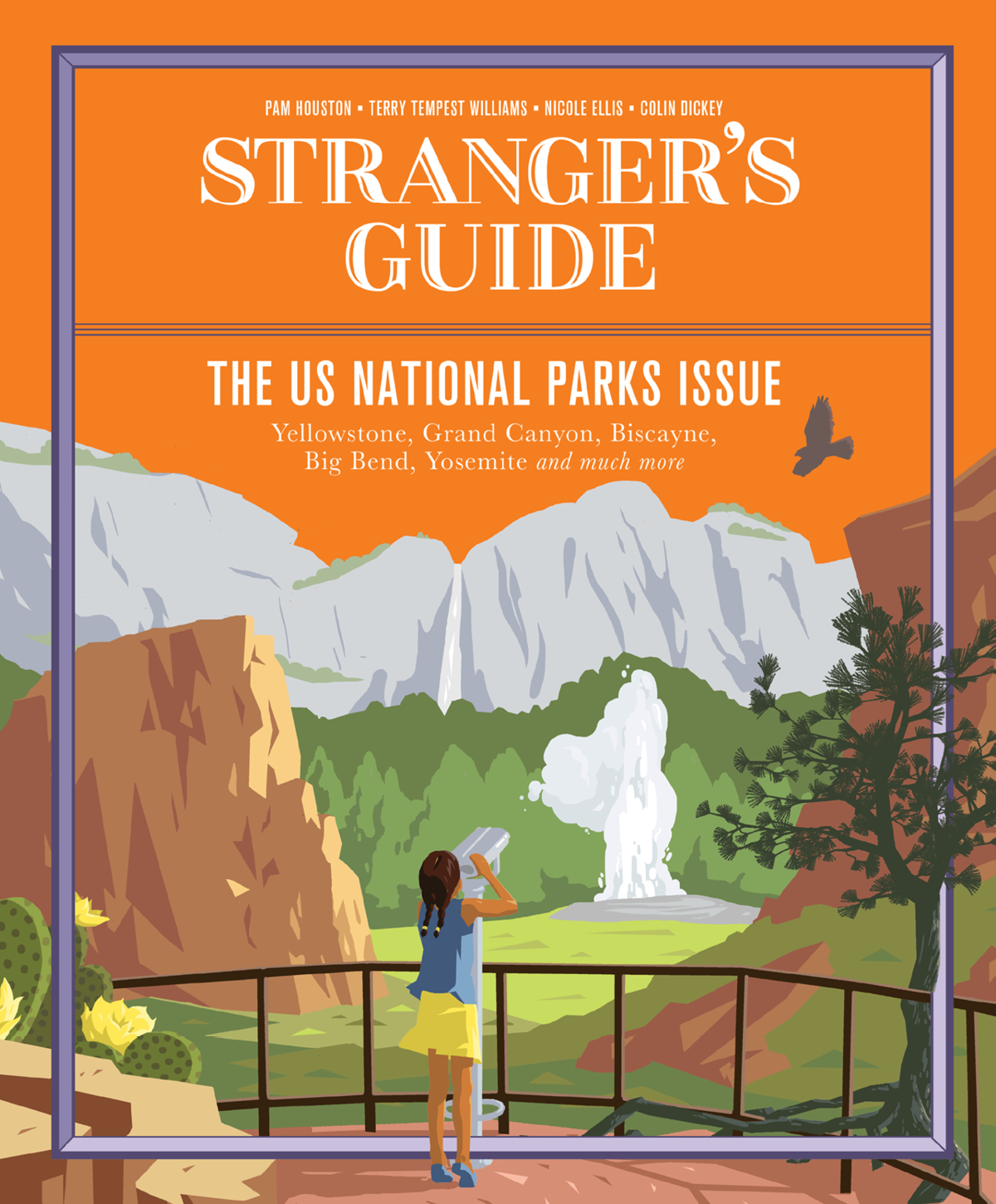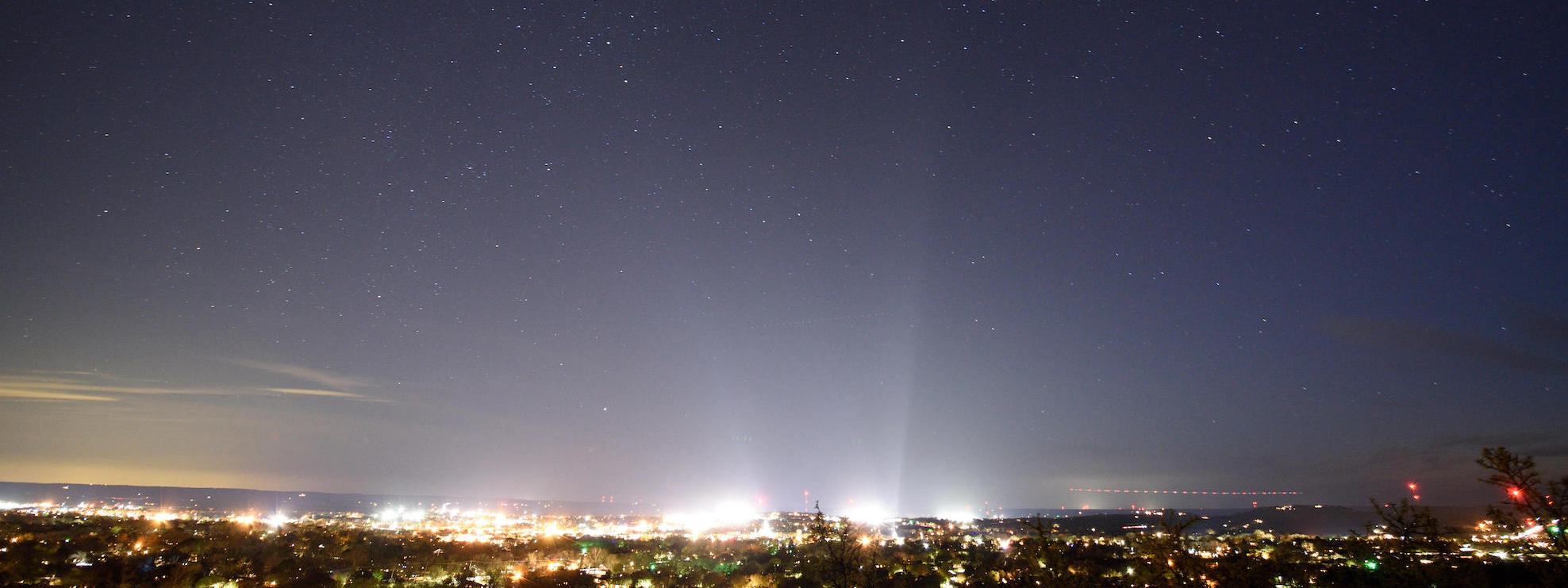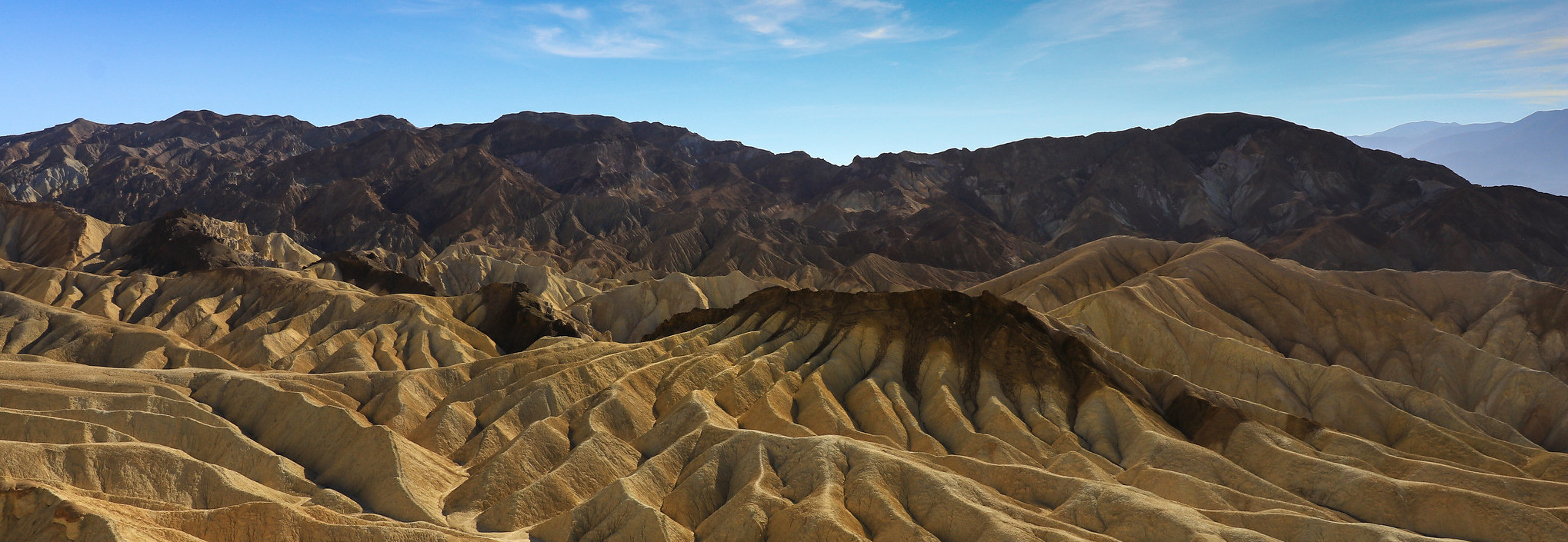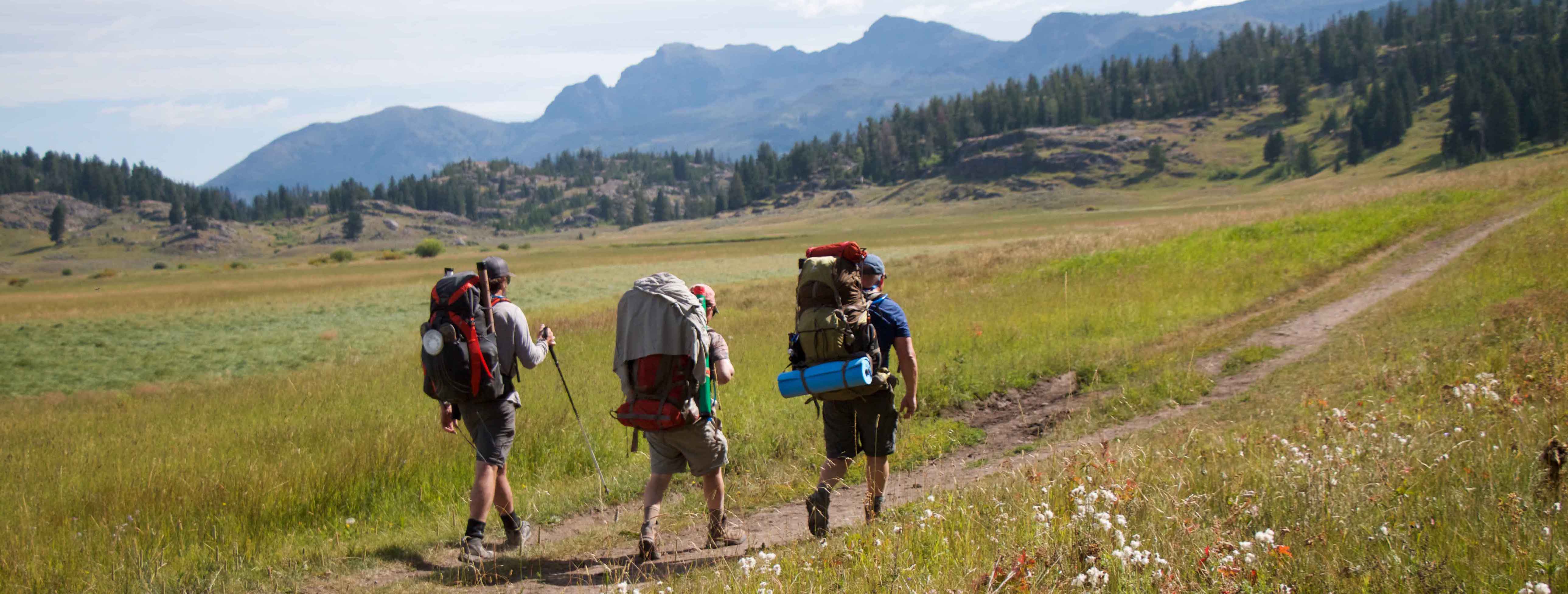
In August of 2019, I go into the mountains. I leave behind my wife and my children, my work and assignments, my students and a long list of chores. I leave behind the developments and scandals and fast-breaking scoops that daily demand my attention. I go to the deep backcountry of Yellowstone National Park so that I might “learn the news,” as John Muir once wrote. Because, he lamented, “I am learning nothing in this trivial world of men.”
The news, it turned out, was good. It had been a wet, cool, summer, so the alpine wildflowers were still in bloom, the rivers were full and the fish were healthy and hungry. Early one morning a friend and I leave our campsite and begin working our way up the headwaters of the Lamar River in Yellowstone National Park. This was well off-trail, and animal tracks—bison and elk and mule deer, mostly—outnumbered the few footprints in the gravelly sandbars we cross. We catch a lot of fish, close to 40 between us, most of them healthy Yellowstone cutthroat trout that are native to the greater ecosystem here and in decline everywhere else. They are named not for any behavioral malice, but for the scarlet slash on the underside of their jaw. The lower portion of their body is painted in shades of gold, ochre, olive and black spots cluster densely at the tail. Individual fish have wildly varying patterns though, and every time I catch another one I fall in love all over again.
It isn’t easy to leave the river, even after the sun slips behind the canyon wall, even after the bite goes cold, even after realizing there isn’t enough daylight to retrace our steps back down the river. The dark is dangerous in the mountains. It gets down to freezing and predators lose their inhibitions. On the other hand, the best fish is the one lying in wait just around the bend. Finally, the instinct to survive overpowers the lure of one last cast. We shoulder our daypacks and start switch-backing up a steep hill to look for a route back to our campsite. This is high country, over 7,000 feet, and the scramble up leaves us breathless, our bare legs etched in red from the thorns and thistle.
We eventually crest a saddle between two buttes, and the whole Lamar River Valley comes into view, its rolling meadows bathed in an orange glow from the setting sun. In the distance, a herd of bison works its way slowly through the sage. “It really is the American Serengeti,” Kent says. If you stood here long enough, you would see the wolves come out of the forest to harry the bison, as well as the pronghorn and elk that all graze the flora down to their roots, creating the wide, open vistas that have drawn people to this spot for thousands of years, mostly to hunt but also to pray. We stand in silence for a moment, then study the map.
“Is that Cache Creek?” I ask, pointing to where the folds of open plain dove out of sight into a forested canyon.
“It must be,” Kent says. He points out the game trails—paths worn to bare dirt from the hooves of countless animals over at least as many years—that converge off in the distance. “If we can get down to those trails, they’ll lead to the ford, then we can get to the site from there.” We’ve been fishing and camping and climbing and skiing together for over 30 years, but he makes his living in the mountains, and I just write about them, so I follow Kent’s lead.
Leave this as it is. The ages have been at work on it, and man can only mar it.
The sun has dipped below the ridge on the other side of the valley, this time for good. As we start back down the other side of the ridge we enter a dark thicket of lodgepole pines. This was ground zero for the great fire of 1988, which burned over one-third of the park, and the sun-bleached skeletons of dead trees cover the ground like a jumble of matchsticks, so thick that we hop from one fallen trunk to the next. It’s slow, treacherous going, and at one point my footing gives way. I fall to the ground with a thud, just missing a gnarly branch that shoots up off the trunk like a spear.
Kent looks back and gives me a hand up. “Be careful. My buddy fell down on one of those and impaled his thigh. They had to airlift him out in a chopper.” Kent has lots of these stories, each one as disconcerting as the last. We push on, anxious to break out of the thicket. It’s getting darker, and I begin to wonder if we’re even moving in the right direction. Kent stops and points to a little clearing where the underbrush is matted and flat to the ground, some large animal’s bed. Nearby is an enormous mound of feces, black as tar.
“Huh, that’s pretty fresh,” Kent says.
“Is that bear scat?”
“Yup. From this morning or last night.” Kent says this without expression. We keep walking. Bears are the backpacker’s bogeyman—the topic around every campfire and trailhead. During the 10 days I spend in Yellowstone, my bear spray will be literally attached to my hip or next to my pillow as I sleep. Bear sightings are common in Yellowstone, and they usually aren’t dangerous, until they are. Every year, on average, someone will be attacked by bear, and sometimes they die. Following some simple rules can decrease the risk, but we’re breaking most of those rules at the moment: We’re hiking off trail, in bear country, right in the kind of thickly forested areas grizzlies like the best. And we’re hiking at dusk, when both predators and their prey are most active.
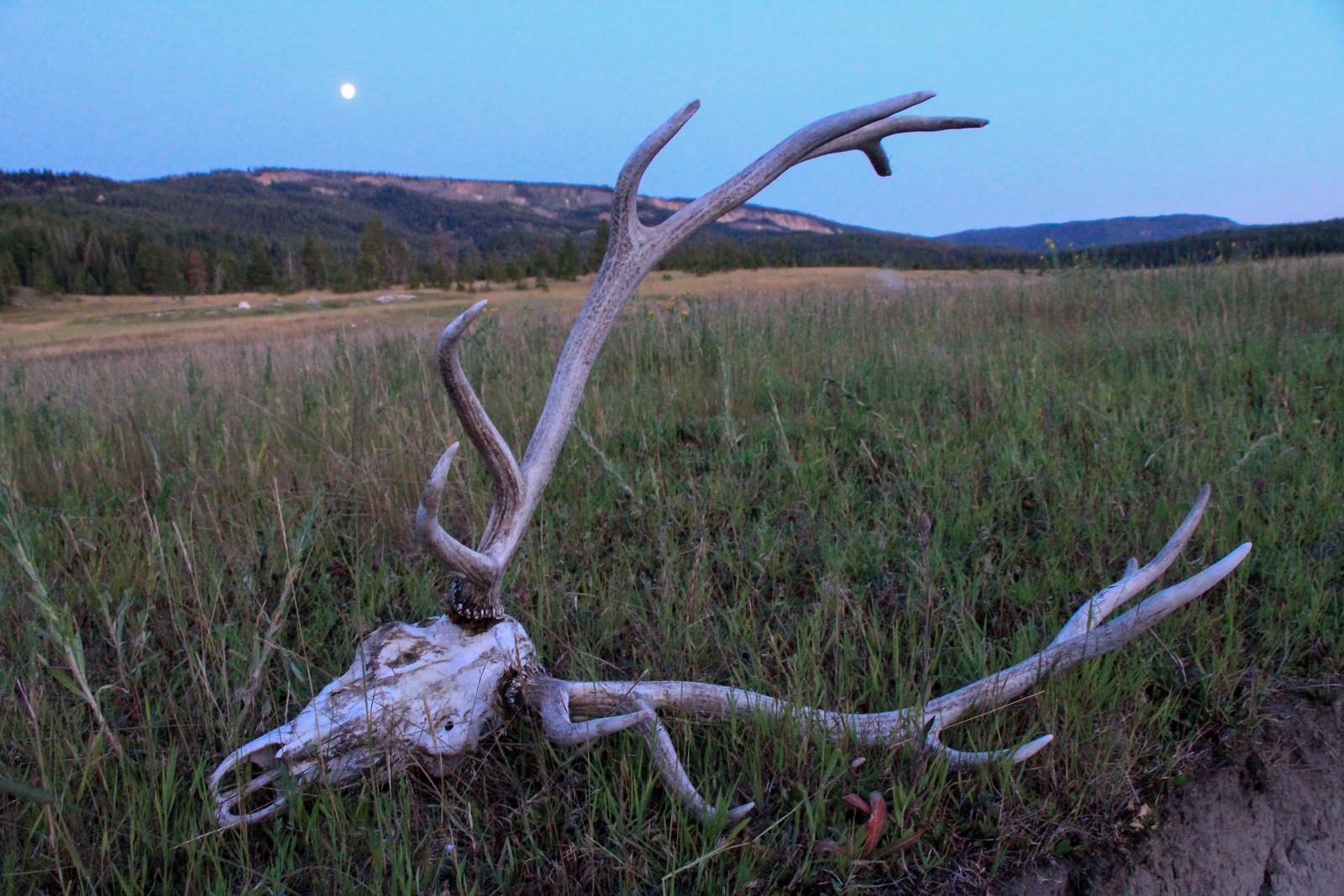
Ten minutes later we emerge from the woods back into open country. We find a bison trail that takes us downslope to the promised ford, and from there, just as darkness descends in earnest, back to our camp. It’s been a 20-mile day, and I would like to crawl right into my tent, but there’s a lot that needs to done. Kent puts water on to boil, and I go to a copse of lodgepole pines to retrieve our food, which hangs some 20 feet in the air, suspended from a horizontal trunk hung high above. There are deep gouges in the trees from where a bear once tried to get to someone’s food. Sitting on a nearby log, I strip off my wading boots, three sets of socks, and the gauze and tape I’ve inexpertly applied to my ravaged toes. My old blisters have begot new blisters. I dress them and bundle up in dry layers. We eat in silence, then go to bed. A full moon casts a pale glow over the valley, and for a moment, I think snow has blanketed the American Serengeti.
In the early years of the parks system, the government marketed them as wonderlands of endless novelty.
•••
Only two percent of visitors to Yellowstone camp out in the backcountry, which has given rise to a great irony: Some of worst traffic in America lies a mile or two from the wildest country in the lower 48 states. I’ve sat in traffic for 30 minutes behind people peering breathlessly through their binoculars at a herd of bison, then found myself walking through the same herd before the hour is out.
One night I decide to relax and just pitch a tent at one of the official campgrounds. One after another turns out to be full, but before I can despair, an older couple offers to let me pitch my tent next to their camper.
“Aren’t you worried about bears?” asks a woman named Linda. Every summer she and her husband Steve drive their Honda Goldwing up from Alabama, sleeping in a small pop-up camper. I tell her yes, which is true. No one who has watched Leonardo DiCaprio get mauled by a bear in the movie The Revenant sleeps easy when grizzlies are around. As the three of us sit around the tailgate to my rented SUV, our conversation meanders, touching on college football and the schism between Harley people and, well, everyone with a Honda or a Triumph. Then, it swings back to the park and why we’ve come here. We’re watching the sun set against the Thunderer Range, which rockets up out of the Lamar Valley in a sheer, vertical face. It becomes clear that we’re here for the same reason—the mountain air, the stunning vistas, etc.—and yet different reasons altogether. Linda and Steve are on vacation. I’m here because I’m broken, for the same reasons any of us break—too much work, a death I expected, and one that I didn’t, a president indifferent to any noble purpose. And when I’m broken I come to the mountains. The wilderness can’t fix me, but it can make me feel whole for awhile. The truth is that there are probably 4,114,999 reasons to visit Yellowstone, which is to say, one for every person who visited the park in 2018. And it may not matter. The park isn’t really here for us, anyway.
II
In the summer leading up to my 21st birthday, I decided to take some time off from college. One of my best friends had moved to San Francisco, and she was living in a squat with two club promoters from Ireland. By the standards of my life in Ohio, her life seemed interesting and glamorous, even if they couldn’t afford toilet paper all the time. The fact that the Irish squatters were also dealing ecstasy wasn’t my primary motivation, but it didn’t discourage me much, either. A few weeks before I was supposed to leave, my friend announced she was returning to Columbus. The scene in San Francisco, she explained, had gotten way too heavy. I’d already missed the deadline to register for fall classes, so I needed a backup plan. I decided to go live in the woods.
You could be struck by lightning, or suffer terrible burns from a fumarole, steam vent, or mud pot. People regularly run afoul of the quarrelsome bull bison, and gorings are not uncommon.
That these two propositions seemed more or less synonymous in my mind—become a club kid; spend three months alone in the mountains—says a lot about my state of mind in 1991, as well as the milquetoast counter-culture of the Midwestern United States of that era, in which frat boys might spend their summers following the Grateful Dead before preparing for a career in corporate law.
By mid-August, I was in the Mount Jefferson Wilderness of Central Oregon. I was alone, I was scared, and becoming aware that my primary motivation for doing this was because it sounded cool to the spritely hippy girls back at Ohio University. And then, on the fourth night everything changed. Four days of cloudless skies had given way to a blanket of low, dark cloud cover. In the city the clouds are an abstraction, a thing that lies above and beyond you. In the mountains, you walk among the clouds. The breathtaking vistas disappear, replaced by dark and foreboding shapes that reluctantly resolve into forest and rock formations. If you’re already lonely and scared, and I was very much both those things, it creates a very gloomy atmosphere. Eventually I found an old lean-to and pitched my tent inside it, trying to put multiple layers between myself and the wild. Outside, the wind howled through the fir and the hemlock, and it began to drizzle.
I don’t know how to explain what happened next; some of the most profound transformations we barely notice at the time. When I woke, the weather front had moved on, and my depression and dismay had lifted with it. It’s not that I felt any less alone—it’s that I stopped. I spent the next 12 weeks in some of the most remote parts of Oregon and Washington. I rarely encountered other people, and had so few conversations that, when my father picked me up at the end of my trip, I had to accustom myself to hearing my voice out loud again. For months afterward my dreams were full of long, slow pans of bird’s-eye views over the terrain I’d covered, as if part of me was still in the woods.
I came back a different person, though that wasn’t immediately evident at the time. The things I saw were beautiful, imposing, and sublime. I experienced periods of exaltation and transcendence. But none of this, I would eventually come to understand, changed me. In the mountains, living alone, every decision had consequence. The stakes were always high, but only for me. The universe would be unaffected by my passing.
Nature, Joseph Conrad once wrote, isn’t for or against you, but it’s highly intolerant of error. I had entered the woods an overgrown man-child, lacking both confidence and competence. I left it in possession of a soul.
III
In the beginning, there was no wilderness. There was just the world, and we were in it. The latest offshoot from the hominid family tree, Homo sapiens looked like it would also be the runt. We were slender, delicate creatures, burdened with large, calorie-guzzling brains in an age of brawn, ill-adapted for survival in an environment that was short on foodstuff and long on sharp-toothed predators. The early chapters of our collective biography make for dull and pitiable reading. For several hundred thousand years, we supplemented a meager diet of fruits and nuts by scavenging the kills of larger, better outfitted carnivores. Unlike our more robust brethren like the Denisovans or Neandertal, we remained home, an unimportant species largely confined to a few marginal valleys in Eastern and Southern Africa, our population rarely exceeding the size of a small Midwestern town.
We should forgive our ancestors if they failed to regard nature as awesome or wondrous or sublime. The mountains wanted to freeze us, the winters to starve us, the fauna to eat us, the flora to poison us. Nature, so to speak, was the leading cause of death for almost our entire existence. Around 70,000 years ago, anthropologists believe, our species crossed a threshold. Having survived a genetic bottleneck that may have reduced our numbers to fewer than 40 “breeding pairs,” sapiens began a slow but sure ascent. Our tools, heretofore limited to simple hand axes, grew more complex. We learned to cooperate, and by working together, evolved from scavengers into predators. Our language, according to at least some theories, became more complex, allowing us to achieve greater levels of cooperation. Our population expanded, and we crossed out of Africa and spread our seed across the land, eventually outcompeting all the other hominids we found in our way. Homosapiens were on their way.
In the beginning, there was no wilderness. There was just the world, and we were in it.
Agriculture, in the larger sweep of our history, is a relatively recent phenomenon. Once the central epiphany—nature, the wilderness, is malleable; we can bend it to our will—spread, we quickly learned to apply it to all manner of lifeforms, from ungulates like horses, cattle, goats and sheep, to all the seed-bearing plants of the forest and field. A restless, migratory species settled down. Homosapiens flourished and multiplied, gathering into ever larger communities in fertile valleys carved out by the Indus and Nile and Yellow rivers. We surrounded these cities with walls, for the first time creating a barrier between us and the world. The wild, the place outside the walls, out beyond the field, up high in the mountains and deep in the forest, was born. It was fearsome and powerful, symbolized by mythical beasts with terrible appetites and gnashing teeth. For several thousand years, nature continued to be an opponent, an instrument of divine wrath, the anvil against which heroes were forged. This struggle with a cosmos that bestowed grain and fish and wine but exacted a terrible cost must have seemed as enduring as the ocean or the stars.
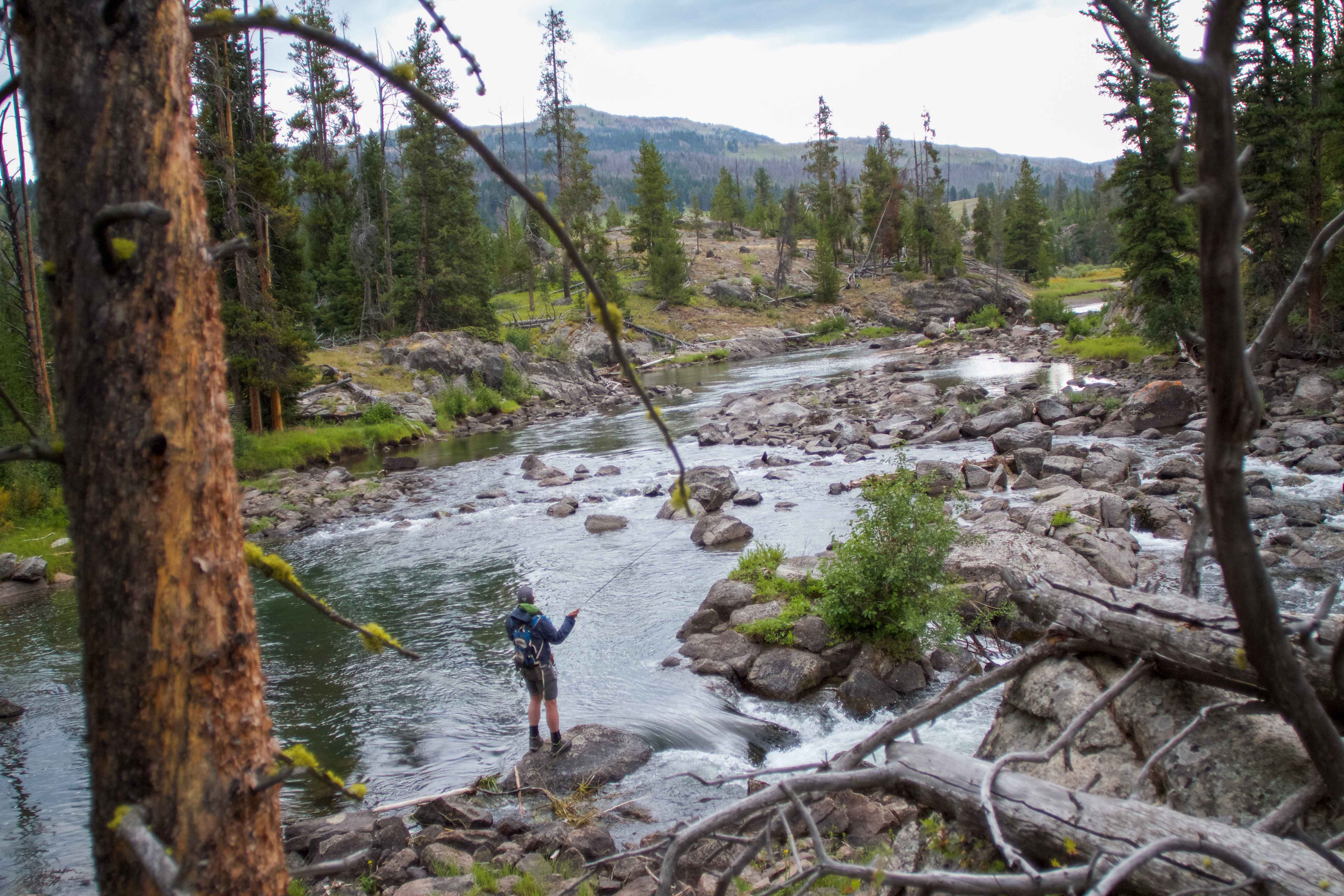
By the late eighteenth century, that project was already well underway. In 1768, James Watt built his first prototype of a steam engine, Captain James Cook left Plymouth harbor on his way to discover Australia and an Anglican vicar named William Gilpin published a book that forever changed how we would look at the world around us. An Essay on Prints was essentially an extended treatise on composition in the visual arts, but it popularized a term—the “picturesque”—that was “expressive of that particular kind of beauty, which is agreeable in a picture.” A painter himself, Gilpin went on to publish a series of guidebooks to the English countryside, which advised readers not just on what to see, but also how to see it. Gilpin proved so influential that the tableau of well-born tourists traipsing through the English countryside with canvas and watercolors in hand, looking for a vista that was “rough” yet also “varied,” with a “dark foreground,” and if at all possible, containing a ruined abbey or castle for “consequence.”
“The past,” observed the British writer L. P. Hartley, “is a foreign country; they do things differently there.” It is hard for us to imagine that, until Gilpin and the rise of English romanticism of which he was a part, there was no appreciation for the scenic. In America, this evolution toward a new way of seeing, of making the wilderness beautiful, took an especially long time, possibly because the battle to subdue nature was taking place long after most of the world had already hemmed in its forests with fields and harried the last of its wolves up into the highest reaches. Our forests, on the other hand, seemed dense and boundless, and our mountains were recognized as barriers to the country’s growth and development. In America, it took a bizarre tragedy, and the morbid curiosity it inspired, for us to begin aestheticizing nature.
•••
On the night of August 28, 1826, Samuel Willey and his family heard a foreboding rumble. They had moved to the White Mountains the previous year, and they tended a small farm at the foot of Mount Washington, then believed to be the country’s highest peak. A torrential storm had blown in that night, and great swaths of the slopes hanging over the Willey house were beginning to give way. Fearing for their lives, Samuel Willey, his wife, their five children, a hired man, and a boy took flight from their home. When the neighbors arrived the following day, they found the beds mysteriously unmade and a Bible lying open on the kitchen table. The Willey family, the hired man and the boy had fled right into the path of the landslide. Three of the bodies were never recovered. The house had been spared, the river of mud and rock and shattered timber parting at a ridge just above their home, then joining again just below it. A miracle, in reverse.
The bizarre tragedy made the headlines in all the Eastern papers, and soon sightseers were trickling into the valley to witness the Willey house’s mute testimony to the vagaries of chance. The locals were quick to capitalize on people’s interest in the region, running guided horseback trips to the top of Mount Washington as well as other impressive sights in the White Mountains.
The timing was propitious. In 1825, an English painter named Thomas Cole had taken a trip to upstate New York and ended up creating America’s first artistic movement, the Hudson River Valley School. Cole found a warm reception among the prosperous merchants and professionals of New York City. It was a patriotic time—no home complete without a print of George Washington—and well-heeled art patrons were eager to show that America was just as picturesque— moreso!—than anything in the old country. Within a year Cole had brought his canvas and palette to the Willey house.
A host of America’s artists and intellectuals followed in his wake: Nathaniel Hawthorne wrote a series of newspaper sketches and short stories from the locale and Ralph Waldo Emerson wrote the founding document of transcendentalism, “On Nature,” four years after returning from the White Mountains.
In her book, Inventing New England, the historian Dona Brown makes a persuasive case that the hoteliers, tour guides, railways and tradespeople effectively partnered with America’s budding creative class to sell the country on the scenic getaway as a form of recreation. The very idea of leisure was novel in the Jacksonian era—still considered a sinful indulgence in strict religious circles. But by the 1850s, thousands of Americans from both working and professional classes were supporting this nascent tourist industry.
“By the 1850s,” Brown writes, “an infrastructure was in place to prod, cajole, and threaten such tourists into the proper scenic experience of the White Mountains, whether they had been trained for it or not. Developing the tourist industry also “developed” tourists: It transformed masses of people into scenic consumers.” The White Mountains created the template that would ultimately result in the 419 protected areas, among them 61 national parks, 84 national monuments and 19 national preserves in the United States, to say nothing of the additional 154 national forests. It is a reach to say that our national parks started with a painting, but it is true that before we could protect the wilderness we needed to be taught to see it.
IV
In Europe, the most desirable land belonged to those who could afford to buy it. The exclusion of the public—from the great estates of France to the English king’s vast game lands—was what established its value. Even the word “park” originates from an old German word for fence. So in 1872, when President Ulysses S. Grant signed a law creating Yellowstone National Park, America had added a new and radical variable to our democratic experiment. Unlike every available precedent, we proposed that a nation’s most priceless treasures should be owned equally by all of its citizens.
Like all experiments, this one took a lot of fiddling to get right. If Wallace Stegner was right in calling the national park America’s “best idea,” then it was one that dawned on us slowly. The bill creating the park described it as a “pleasure-ground for the benefit and enjoyment of the people.” Americans were still a long way from protecting the wilderness for the sake of the wilderness.
Because a national park was unprecedented, people didn’t know what to do with Yellowstone. And because Congress hadn’t thought to fund their creation, there wasn’t anyone there to tell them. In fact, it was still contested land—some of the first sightseeing parties found themselves in the middle of a war. In 1876 a tourist, George Cowan, was shot in the head by a Nez Perce warrior. He survived and turned the flattened musket ball into a timepiece. The Northern Pacific Railroad arrived, swelling the mining and logging towns of Idaho, Wyoming and Montana. The railway exploited the popularity of Lewis Carroll’s recently published children’s book, Alice’s Adventures in Wonderland, using images and language from the book in pamphlets and guidebooks to market “America’s Wonder- land.”
The tourists crowded in. They hunted the elk, the pronghorn, the bear, the birds, the wolves, the mountain lion and the bison that could no longer be found on the plains. Hotels and concessionaires sprung up to serve the “excursionists,” who bleached their handkerchiefs in hot springs and threw enough coins, bottles, rags and trash into one geyser that it ceased erupting. When they left, visitors to the park hauled out fossils, rare stones, ancient artifacts, hides and anything else that might look good on the mantle or bring a fair price back home. By 1883, Americans still weren’t sure what a national park should be, but they knew what it shouldn’t be. In February, Congress kicked out the profiteers, more than doubled the park’s budget, and appointed the US Army to patrol the park, literally calling in the cavalry.
“The great wilds of our country are being rapidly invaded and overrun,” lamented John Muir, the Scottish-born father of American conservation, “and everything destructible in them is being destroyed.” The bison, which had roamed the entire continent in vast herds of 60 million, had been reduced to a single herd struggling to survive in the Yellowstone plateau. The last wild passenger pigeon, once the most numerous bird species on the planet, would be killed within a few years, victim as much to the country’s rapid deforestation as it was to overhunting.
“The great wilds of our country are being rapidly invaded and overrun,” lamented John Muir, the Scottish-born father of American conservation,
The photos from this period provide damning testimony to the rapacious energies of that time: A pyramid of buffalo skulls rising against the flat prairie sky; a redwood, recently dispatched, that survived the entire Christian era but not the two proud teen boys in giddy delight at their own destructive powers. It’s hard not to judge, and harder still to imagine that we didn’t know better. But we didn’t: Aristotle had taught us that “nature [had] made all things specifically for the sake of man,” and the Bible commanded us to subdue the earth and have dominion over the fish and the fowl and “over every liv- ing thing that moveth upon the earth.” We did not hear the dissenting voices because there were none to be heard.
Until, quietly at first, and then louder and louder, voices were raised. The great German naturalist Alexander von Humboldt theorized that nature was a giant organism, everything connected, everything dependent on everything else. John Muir brought rhapsody and theology to the wilderness, seeing salvation in the mountains, delivery from our modern sins. It was a vision in which humans were pushed to the fringe, aptly summarized by a speech Teddy Roosevelt gave to a crowd of Arizonans while whistle-stopping his way through the Grand Canyon: “Leave this as it is. The ages have been at work on it, and man can only mar it.”
At first, Muir was, quite literally, a voice in the wilderness, but by the end of the century the United States Census Bureau had declared the frontier officially closed, and the tide began to turn. In 1890, the government created Sequoia and Yosemite National Parks; Mount Rainier gained the same status nine years later. Teddy Roosevelt, who bullied the conservationist movement onto the American stage, protected millions of acres via a system of parks, national forests and national monuments, working with Congress when he could, and behind their backs when he had to. We still were moved to protect the environment so that we might exploit it, for our souls as well as our pocketbooks, but it was a start. The American colossus bestrode the twentieth century like a conquering giant, but at home, we reserved more and more of that power to preserve some of the land in a state that pre-dated our arrival. In the end, John Muir’s vision to preserve and protect the wild carried the day. But the question I keep wondering as I wander through Yellowstone, is whether we want humans relegated to the fringes. Greenland is melting and entire ecosystems are rapidly going extinct. Has our emphatic isolation from nature protected it, or accelerated its demise?
About halfway through my trip, Kent and I fish the Snake River. The Snake seeps out of Heart Lake in one of the most remote parts of the park, which is to say the country. From there it meanders past the feet of the Teton Mountains before draining most of Idaho and flowing into the Columbia. It is the ying to the Yellowstone’s yang, and the rivers come within feet of each other at Two Ocean Pass. Spit in one direction and you deposit your DNA in the Atlantic; spit into the Snake and you become part of the great Pacific. There’s something exhilarating about wading across one of America’s greatest watercourses. You feel, momentarily, like you’re Paul Bunyan striding across the land. We don’t often talk about the national parks as a bulwark of American exceptionalism, but we should; it’s enough to remind one that even in the age of mendacity and strife, America contains the sublime.
Fish generally eat other fish, so you’d think someone who spends a lot of time with the species would occasionally catch one in the act. In fact, I rarely do, which is why I am surprised when Kent catches a 16-inch brown trout with a rare, Snake River fine spotted cut-throat trout sticking up from its gullet. I generally support intimate contact with the food chain—every kid should, at least once, kill a creature and then eat it, so that they’ll know that things die, every day, so that we may live. But we are fishing the headwaters of the Snake, and the brown is a distinctly unwelcome visitor to this part of the world, an immigrant— if many generations removed—from the slow reaches of Europe’s mountain streams, and a primary target in an ongoing campaign to eradicate invasive species—even if, like the Brown trout, the park put them there in the first place.
Kent calls me over to look at the brown. We take turns holding the net and examining both fish, one very much alive but guilty looking; the other small and showing every sign of having passed over to the other side. We debate what to do, then finally elect to kill the brown trout, smashing its head with a stone then cast it up onto the bank, surely making some bird or badger’s lucky day.
The National Park Service is in conflict, not with poachers or oblivious tourists or forest fires, but with a previous generation’s vision of what wilderness should be, and the way that vision sent down roots that have been difficult to extricate. In the early years of the parks system, when the government was still in the business of selling the parks in order to save them, marketing them as wonderlands of endless novelty, park managers enthusiastically managed the wildlife to the advantage of the “sportsman,” as hunters and fishers were then called. Because the wolves culled the herds of elk and deer and bison, the wolves were extirpated. Because many of Yellowstone’s rivers and lakes were isolated from lava flows, waterfalls, and other evidence of the cataclysm’s in the park’s recent geologic past, they were fishless. So the park service introduced the brown and the brook trout. The parks needed customers, and they needed them to leave happy. Without them, Congress frequently informed the park service, the parks would lose their justification for being. After all, the human wolves—the mining, logging, farming and tourist industries perched just at the edge of the parks, eager to expand their interests—were far from extinct.
By this time, however, there were voices of dissent, the most powerful ones coming from within the administration of the park service itself. A generation of young biologists had grown up reading John Muir, and were ready to fight for a vision of the park in which humans occupied the margins, as visitors, instead of the center, with the management of the wild revolving around our own concerns. People like George Melendez Wright, who in 1933 published the first survey of wildlife in the parks system, and Adolph Murie, who fought relentlessly to show that far from harming the herds of quadrupeds that were central to ecosystems like Yellowstone, they helped them grow and thrive by culling their weakest members. This vision was finally encoded into law in the Wilderness Act of 1964, so that parts of America might “retain its primeval character.” It has, for years now been the reigning paradigm of wildlife conservation.
The brown trout—not just the one we left lifeless on the bank of the Snake, but all of them living within the boundaries of Yellowstone—are both a symbol of that struggle between these two conceptions of wilderness, one long past, one vibrantly present, as well as the thing itself. The science writer David Quammen compared the trout in the Western wilds as a synecdoche, representing the larger struggle. But the truth is that this current vision of wilderness is, in its set of root presumptions, just two sides of the same coin. And just as dangerous, as it keeps us isolated and separate from the very ecosystems of which we are such a powerful element.
